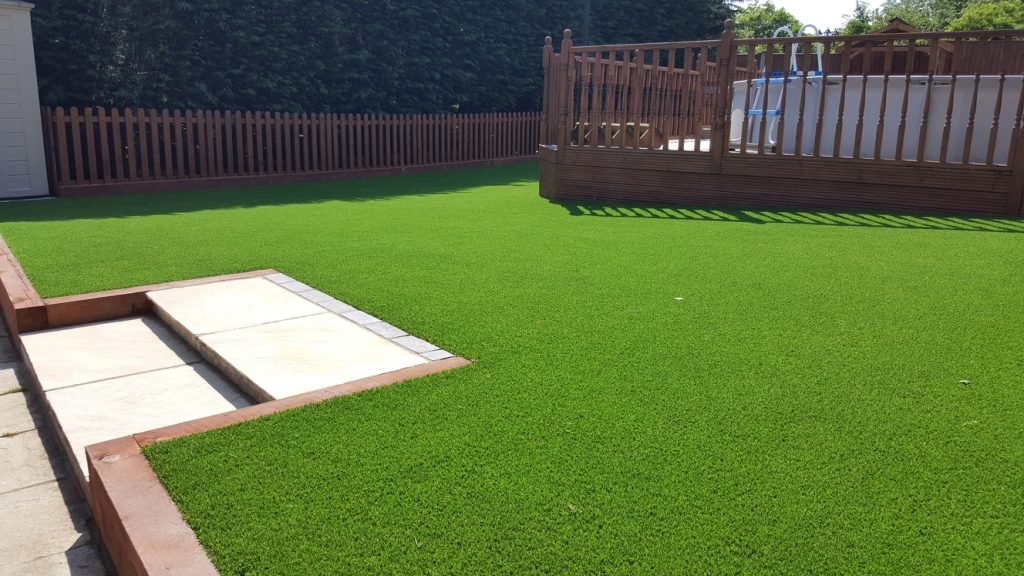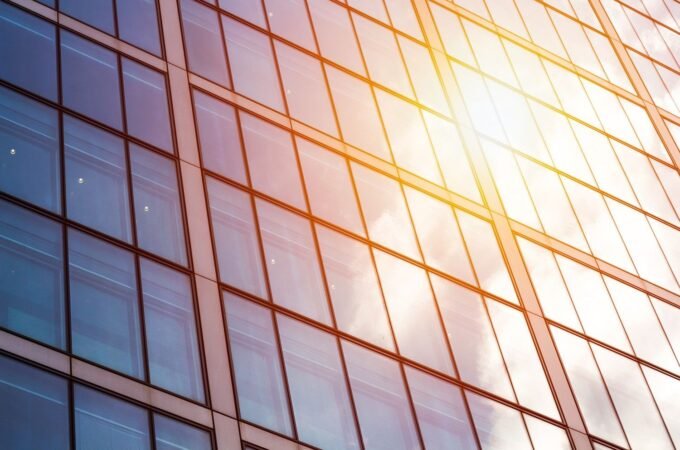
12 Reasons to Stop Putting Off Getting Artificial Grass
The advantages of artificial grass far outweigh its natural grass counterpart. In areas such as Central Arizona and Southern California, where water scarcity is a regular challenge, locals are discovering that installing fake grass in cities like Phoenix, Tucson, Los Angeles, San Diego, and other drought-hit zones allows them to maintain a visually appealing lawn, devoid of anxiety over violating water-saving rules or the landscaping guidelines outlined by their community homeowners association.
In this article, we explore the benefits of a faux lawn for both homeowners and commercial establishments.
Table of Contents
ToggleTop 12 Benefits of Synthetic Grass
1. Minimum Upkeep
Synthetic turf demands considerably less maintenance than real grass. The days of lawnmowers and trimming tools are over. It doesn’t call for constant watering, seeding, or fertilizers. For those who lead busy lives or are physically unable to tend to their lawn, this low-maintenance feature saves both time and energy.
2. Long-Term Affordability
Despite a significant initial investment, synthetic grass proves to be cost-effective over time. There’s no need to continuously shell out money for water for irrigation, fertilizers, semi-annual grass seeds, or landscaping services. Plus, high-quality artificial grass can last decades or even more, ensuring your upfront cost is stretched out significantly.
3. Resilience
Artificial grass, being weatherproof and sturdy, can withstand pets, children, and practically anything else it’s used for. It retains its vibrant green color throughout the year, irrespective of rain or shine. It’s also ideal for high-trafficked areas of your yard, eliminating grass wear and possible muddy patches. However, keep in mind, not all artificial lawns are created equal, and there’s a wide range of quality levels to consider.
4. Water Preservation
As synthetic grass does not require watering, it is particularly advantageous in areas suffering from water shortages, such as the Southwest, or where water rates are high. The conservation of water, especially during periods of drought, contributes to its financial and environmental benefits.
5. Visually Appealing
The evergreen and well-maintained appearance of artificial grass enhances the aesthetic charm of any space. Its tidy, well kept look can raise the property value, making both homes and businesses appear more inviting while boosting curb appeal.
6. Alleviates Allergy Symptoms
Artificial grass can help mitigate grass pollen allergies. As a pollen-free alternative, it lessens allergy symptoms, which, according to the Asthma and Allergy Foundation of America, impact 26 percent of adults and 19 percent of children. This means those suffering from allergies can now enjoy outdoor environments without discomfort.
7. Highly Versatile
From residential lawns and business facades to commercial landscapes, sports arenas, playgrounds, and even indoor spaces, the use of synthetic turf is wide-ranging. Its adaptability makes it suitable for table and bar mats, pool surroundings, children’s play surfaces, indoor putting greens, balcony flooring, and beyond.
8. Suitable for Sports
Play areas need to be safe, and many artificial grass products fit the bill. The even surface and cushioned texture of synthetic turf can reduce injury risks from slips, falls, and physical contact. Additionally, its consistent surface enhances ball control, bounce, grip, and can aid in preventing sprained or twisted ankles.
9. Pets Love It
For pet owners, artificial grass serves as a practical solution for their furry friend. Its ease of cleaning plus its resistance to pet waste and digging help maintain the yard’s aesthetics. The absence of mud or dirt ensures pets stay clean, even when there’s outdoor play after rain.
10. No Mud or Bald Patches
Since artificial grass has no dirt, it can’t get muddy. In regions prone to rainfall, artificial turf facilitates water drainage and thanks to irrigation drainage water won’t accumulate. Bald spots from pooling sprinkler water are no longer an issue either.
11. Personalization Options
Options to customize blade lengths and designs mean customers can tailor their synthetic grass to their individual tastes and specific requirements. Whether it’s adjusting the texture of a sports field or the hue of a garden, such flexibility enables synthetic turf to blend seamlessly into diverse design schemes and can appease the pickiest of homeowners.
12. No Need for Pesticides or Fertilizers
As artificial grass doesn’t attract bugs or require fertilizers, it remains green and robust. This eliminates chemical runoff into water systems and reduces human and pet exposure to harmful substances, making it environmentally friendly and safe for both children, dogs, and wildlife.
Artificial Grass FAQs
Below we explore some of the most frequently asked questions that businesses and homeowners ask about artificial lawn installation.
What is Artificial Grass’ Lifespan?
Depending on lawn quality, wear and tear, climate, and upkeep, artificial grass lasts 15 to 20 years. Properly installed and maintained high-quality artificial grass may last longer. Many manufacturers give guarantees that indicate the product’s longevity.
Can I Install Fake Grass Myself?
While homeowners, with some landscaping experience, can install fake grass themselves, it’s best to contact a professional. Professional installers have the skills and instruments to properly lay grass, join seams, and prepare the foundation. If you’re new to landscaping, a professional installation ensures your new grass will last longer and look better. Not to mention reputable companies offer warranties.
How is Artificial Grass Maintained?
Artificial grass is low-maintenance but not maintenance-free. In high-traffic locations, it can require periodic brushing to preserve the fibers. To keep it odor-free, clean and prevent weed growth, remove leaves and any dirt buildup.
For dog owners who want to avoid foul smells coming from your yard, pick up feces and regularly rinse down the area.
Though rare, look to address any tears, loose seams, or wear spots sooner rather than later to avoid more costly repairs.
Why Doesn’t Water Pool on Fake Grass?
Artificial grass has drainage systems to manage rain and water runoff. Most faux grass has a porous backing that drains water quickly. To improve drainage, aggregate is typically put under the grass during the installation process. This keeps water from gathering and helps the lawn to dry off fast after a storm.
Conclusion
To recap, synthetic turf presents an array of advantages, from minimal upkeep and long-term affordability to visual attractiveness and adaptability. It is especially beneficial in areas prone to water shortages, and for those looking for a green alternative to traditional grass. Furthermore, its robustness, safety aspects, and personalization possibilities make it a compelling selection for diverse uses such as in homes, athletic grounds, and business premises.






